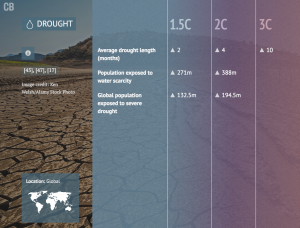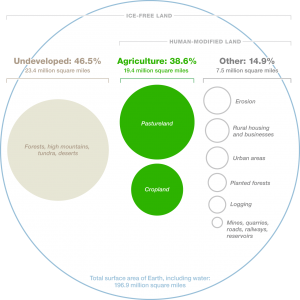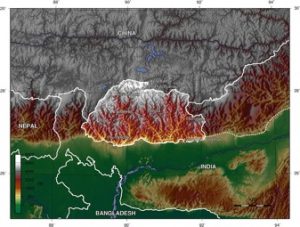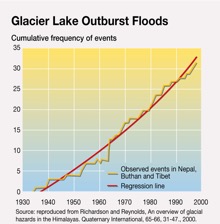What is happening?
Video 1: Warnings From New Climate Change Report
Video Credit: CNN Youtube Channel (https://youtu.be/RvaCM1TNBBk)
Three years ago, 195 nations promised to restrain the emissions of greenhouse gas so that the global warming could be limited to 2°C. This year, however, scientists found that 2°C was absolutely not enough, and a target of 1.5°C should be settled.
According to the “New Climate Report” which was released on October 7th by the Intergovernmental Panel on Climate Change (IPPC), a decrease from 2 degrees to 1.5 degrees Celsius changes the world to a great extent. If the goal is achieved by 2100, there will be a significant decrease in heat, drought and sea level rise. Hopefully, there will be fewer loss of species. There are two reasons why scientists published this report: Warning policymakers and calling for a lower warming target.
Why is it important?
Video 2: Effects of Climate Change Across the Earth
Video Credit: VideoFromSpace Youtube Channel https://youtu.be/uo80xYqZBiw
The failure of achieving the goal suggested in the “New Climate Report” will affect our daily life. The knotty problem we are facing right now is the increasing number of disasters brought by extreme weather. For example, in February 2018, Vancouver experienced severe snowstorms which caused paralyzed traffic and huge economic loss of the city. These snowstorms occurred due to the La Nina Effect – The melting sea ice in the Arctic brought icy waters into the Pacific Ocean and forced the coastal areas to have colder winters than they were before. This also increases the overall sea level and is threatening the existence of island countries such as the Republic of Maldives. In addition, stronger and more intense hurricanes have been attacking the US in recent years. What will be worse, however, is that such climate changes will continue and the weather will become more and more extreme.
Figure 1: Effect of global warming on overall temperature: 1.5°C Versus 2°C
Source: Carbon Brief

Figure 2: Effect of global warming on drought: 1.5°C Versus 2°C
Source: Carbon Brief
How do we achieve the goal and what are the difficulties?
It will take approximately 30 years to reduce the emissions of greenhouse gases to zero and reach a balance (between emissions and reductions). Therefore, “negative emissions” which means carbon dioxide removal must be applied to reverse the greenhouse effect.
However, such a reversing process is not straightforward. According to Hausfather, the linear relationship between increasing temperature and carbon dioxide may break if people start removing carbon dioxide out of the atmosphere. Therefore, the scientists from IPPC believed that people must take actions before the climate become even worse and published “Global Warming of 1.5°C” in the hope of changing policymakers’ minds to settle the target of limiting global warming to 1.5°C instead of 2°C.
Olivia Zhou







